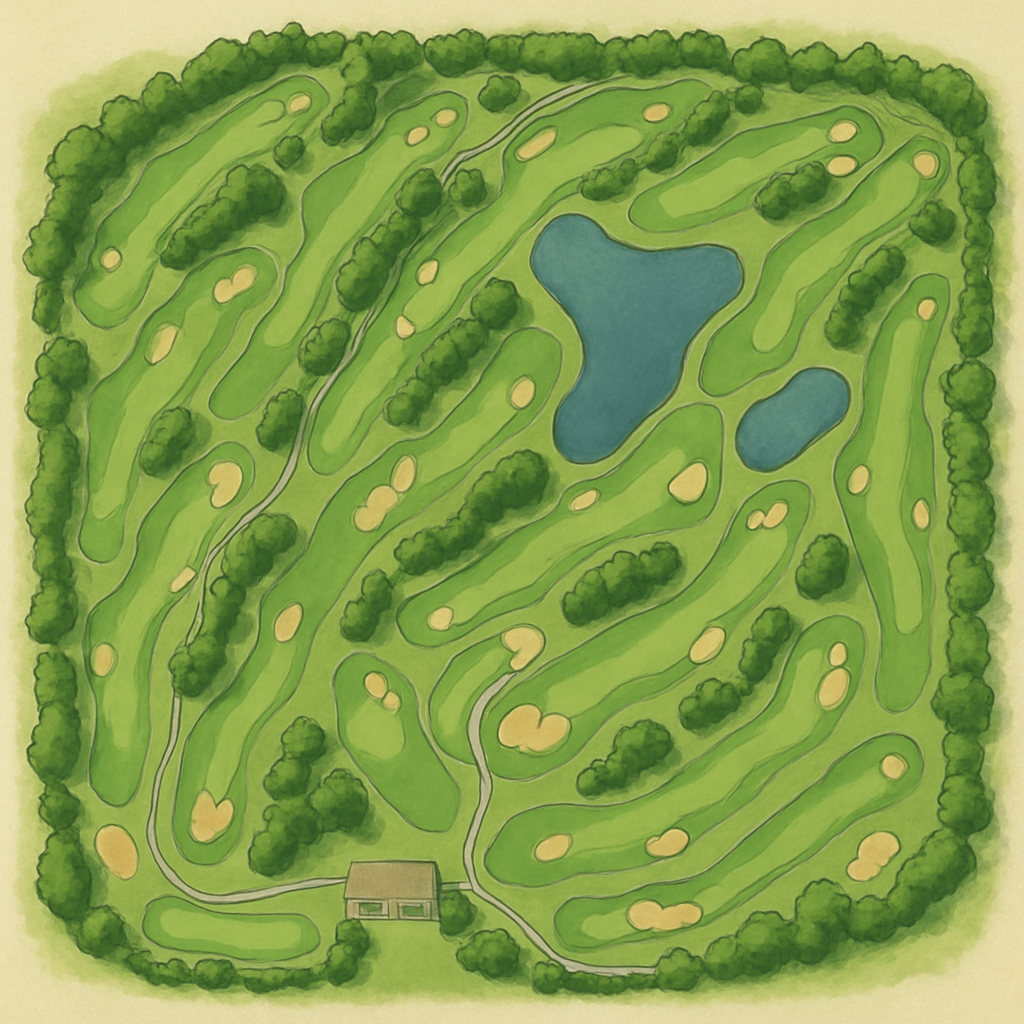5 Golf Scoring Explained: Par, Birdie, Eagle & Bogey for Beginners
Golf can be an intimidating sport to dive into, especially when you’re trying to understand the scoring system. Terms like par, birdie, eagle, and bogey might sound confusing at first, but they are fundamental to enjoying the game. This guide will help beginners grasp golf scoring, making the game more enjoyable and accessible.

What is Par in Golf?
Par is the benchmark score for each hole on a golf course. A hole is typically rated as a par 3, par 4, or par 5, depending on its length and difficulty. For example:
- Par 3: A shorter hole, usually less than 250 yards. Skilled golfers aim to reach the green with one stroke.
- Par 4: A medium-length hole, around 251 to 450 yards. The expectation is to reach the green in two strokes.
- Par 5: A longer hole, generally over 450 yards. The goal is to reach the green in three strokes.
Counting Your Strokes: The Basics
Each stroke you take with your club counts as one point. The objective is to complete each hole in as few strokes as possible. The total number of strokes taken over the course of a round determines your final score.
 Key Golf Scoring Terms
Key Golf Scoring Terms
As you start playing, you’ll hear various terms describing how players score in relation to par. Here’s a breakdown of these essential terms:
Birdie in Golf
A birdie is when you complete a hole one stroke under par. For example, if you finish a par 4 hole in three strokes, you’ve scored a birdie. It’s a great accomplishment and something golfers aspire to achieve regularly.
Eagle in Golf
An eagle is even more impressive, as it means completing a hole two strokes under par. For instance, finishing a par 5 in three strokes earns you an eagle. Eagles are less common than birdies and often celebrated.
Bogey in Golf
A bogey is when you finish a hole one stroke over par. On a par 4 hole, taking five strokes results in a bogey. While not ideal, bogeys are common, especially for beginners.
Double Bogey and Beyond
If you take two strokes over par, it’s called a double bogey. For example, taking six strokes on a par 4. As scores increase beyond this, you simply add to the number (e.g., triple bogey).
Albatross and Double Eagle in Golf
An albatross, also known as a double eagle, is an exceptional score of three strokes under par on a hole. It is extremely rare and a significant achievement, often seen on par 5 holes completed in two strokes.
Personalized Golf Accessories
While understanding the scoring system is crucial, having the right equipment can enhance your experience on the course. Personalized golf ball markers and custom golf ball stamps can add a personal touch to your game and help with golf ball identification.
Personalized Golf Ball Markers
Golf ball markers are small objects used to mark the position of your ball on the green. Personalized markers can feature your initials or a unique design, making them easy to identify and adding a personal flair to your gear.
Custom Golf Ball Stamps
Custom stamps allow you to put a unique design or initials on your golf balls, making them easily recognizable. This is particularly useful in distinguishing your ball from others in your group, especially if you’re playing in a tournament or busy course.
Beginner Golf Scoring Rules
Adhering to basic scoring rules ensures fair play and consistency. Here are some beginner-friendly rules to follow:
- Keep Track of Each Stroke: Count every swing and putt you make, including penalty strokes.
- Out of Bounds: If your ball goes out of bounds, add a stroke and play another ball from the original position.
- Water Hazards: If your ball lands in a water hazard, you have options. You can play from the spot where you hit the ball, or drop the ball near the hazard and take a penalty stroke.
- Unplayable Lies: You can declare your ball unplayable and drop it within two club lengths of the original spot, or go back to the previous shot’s location, with a penalty stroke.
Tips for New Golfers
Understanding scoring is just the start. Here are some additional tips to help you enjoy golf:
- Practice Regularly: Consistent practice can improve your swing and confidence on the course.
- Focus on Short Game: Putting and chipping are crucial to lowering your score. Spend time practicing these shots.
- Learn Course Etiquette: Be mindful of other players, repair divots, and maintain a good pace of play.
Conclusion
Golf scoring might seem complex initially, but it becomes second nature with practice and experience. By understanding terms like par, birdie, eagle, and bogey, you’ll be better equipped to enjoy the game and track your progress.
Remember, everyone starts as a beginner. Embrace the learning process, and you’ll soon find yourself enjoying the rewarding challenge of golf. Happy golfing!
